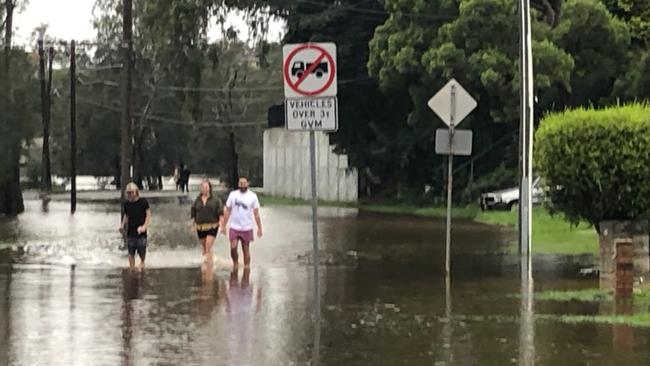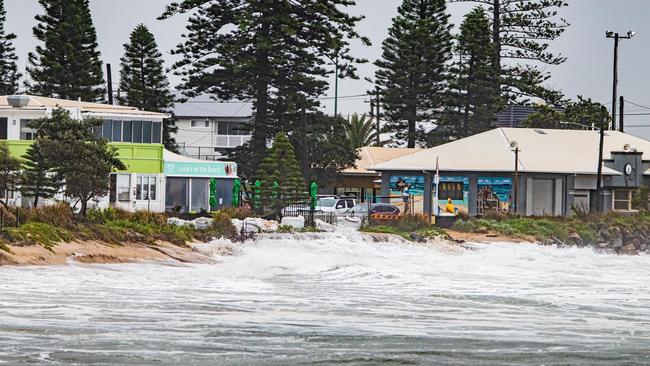Why climate and the environment may be a property investor’s most expensive consideration
Property insurance premiums are rising twice as fast as our already elevated inflation – why?

It might not be high on your consideration list when purchasing an investment property, but environmental and climate factors can influence your ongoing level of expenditure on repairs and maintenance.
The thing is, repairs and maintenance are predictable costs; the looming issue for property investors is utterly unexpected costs related to insurance premiums and special levies in relations to apartments (often the entry level for first-time investors).
Earlier this month, a home in Sydney’s northern suburbs partially collapsed due to suspected termite damage. That was a relatively unexpected incident.
But it is not just those little nibbling insects that are causing property maintenance costs to creep up. Both the United Nations Intergovernmental Panel on Climate Change and Australia’s Climate Council have released reports on climate change predictions for Australian properties – and both present a bleak picture.
In short, more severe weather and more natural disaster events.

Australia’s potential to produce wild weather has been on full display in recent years, from the floods that hit Queensland and NSW earlier this year to the Black Summer bushfires where more than 8000 buildings were destroyed.
Judy Schmidt, director at buyers agency firm City, Country & Coast, says: “This year we have seen one-in-100-year floods cause havoc on property on Australia’s east coast.
“No matter how much due diligence a buyer undertakes, it is almost impossible to predict these events, especially given some of the floods impacted regions that had not experienced flooding since the 1800s and, as such, were rated as low flood-risk zones.”
And with more climate and weather-related damage likely to impact properties, insurance premiums will follow suit.
The Climate Council says: “Claims and damages following extreme weather events are on the rise, with average home insurance premiums rising 178 per cent in northern Australia and 52 per cent across the rest of the country in the decade between 2007-08 and 2018-19.”
Over that same time period Australia’s inflation rate was approximately 3 per cent per year, meaning that home insurance premiums nationally rose by almost double the inflation rate – and almost six times the inflation rate in northern Australia.

Not only will the insurance cost continue to rise for investment property owners, but maintenance costs are expected to climb, especially if your property is in a very warm or very cold and damp location.
For instance, in hot climates, severe sun and UV rays can discolour paint and damage wooden awnings and decks, while in wet-weather areas, damp conditions can lead to severe mould issues.
Although these issues seem easily fixed, the cumulative impact of ongoing wear and tear from weather – if not addressed – can lead into more significant structural problems which can then give rise to a hefty repair bill and/or loss of rental income.
Take an apartment block with moisture issues, for example.
I have seen numerous clients having to fork out tens of thousands of dollars in special levies due to remediation works required for concrete cancer, which is caused by weather-related dampness. Others have been forced to pay large special levies to redo the external facade due to heat and sun-related deterioration.

For those wanting an investment property, Schmidt has a few tips.
“Avoid the obvious issues such as buying investment properties in flood zones, high bushfire-risk areas or waterfront land with soil erosion risks,” she says.
“Not only do they represent cashflow risks, where you may have to spend more on insurance or repairs, but also if environmental conditions worsen you may find that your resale value is severely impacted.
“And as an investment, you want to buy property that has the best potential to achieve strong capital growth at resale.”
Sure, the appeal of investment properties has faded recently. Rising interest rates have turned many passive-income properties into negatively geared ones which require monthly injections of cash to keep them afloat.
But climate change is also a real cost issue and, as an investor do you really want to bet against nature when making an investment?
If the statistics are indicating that weather conditions are getting worse, surely you want to at least consider this risk and buy accordingly. Some checks have become much easier these days – for example flooding maps are easily available online often for free. Or maybe you just want to pay for a termite inspection!
James Gerrard is a Sydney-based financial adviser.



To join the conversation, please log in. Don't have an account? Register
Join the conversation, you are commenting as Logout